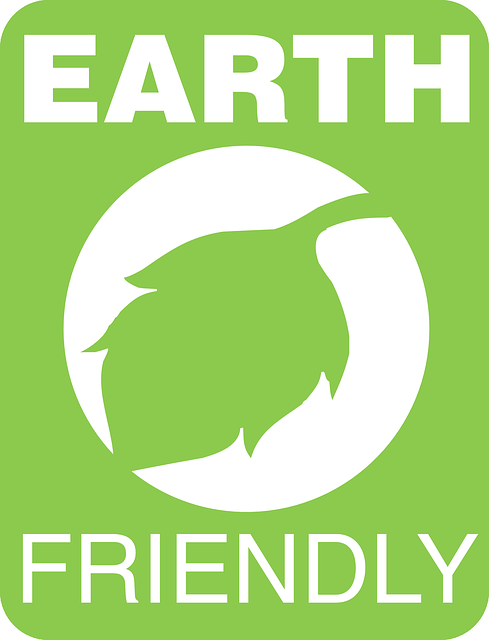“Time to do the washing.”
What do you think of when you hear that phrase?
It used to be all about getting clean clothes, sheets, and towels by doing the laundry. But now, as language evolves and meanings change, washing is connected to green washing where companies seek to project an image of environmentally sound business practices through the use of ambiguous, misleading, and even false advertising.
Online and print media is awash in greenwashing.
 "Earth Friendly Label" by Clker-Free-Vector-Images | Pixabay
"Earth Friendly Label" by Clker-Free-Vector-Images | PixabayOnline and in stores you will see green-inspired advertising, much of which accurately represents the values and practices of manufacturers and distributors. Companies like Patagonia (clothing); Seventh Generation (personal care and cleaning products); Numi Organic Tea; Allbirds (footwear); Pela (phone cases); and Preserve (toothbrushes) have long records of eco-friendly, sustainable business and advertising practices (The 15 Most Environmentally Friendly & Sustainable Companies, 2022. Grow Ensemble).
Other companies have been less successful in implementing sustainability practices: McDonalds introduced paper straws in 2019 that were not recyclable; H&M's Conscious Collection clothing was made with a high percentage of synthetic rather than organic materials; IKEA sold beechwood chairs made from illegally sourced wood; Windex used ingredients found harmful to people and animals in its sprays; Hefy claimed its plastic bags were recyclable when they were not (Greenwashing: 10 Recent Stand-Out Examples. Akepa, July 23, 2021). Other companies are engaging in "greenhushing," where they deliberately do not discuss their sustainability initiatives to avoid criticism from political groups (The New York Times Sunday Business, April 23, 2023, p. 3).
Green washing has led to other forms of color washing by businesses and brands:
What other color washing can you identify? How about Sports Washing?
Sportswashing, as explained by Michael Silverman in The Boston Globe (“This Shot Was Way Off Line,” September 2, 2022) involves turning people’s attention away from negative practices in business or politics by promoting sports events and individual athletic stars. Silverman uses LIV Golf, the Saudi Arabian-backed professional golf tour as an example where Saudi government leaders are seeking to use support for sports to draw attention ways from their human rights abuses and repressive practices toward women and LGBTQ groups.
Another example of sportswashing would be the middle eastern nation Qatar's hosting of the 2022 Men's Soceer World Cup. The tournament is seen by many as a way for Qatar's leaders to distract international attention away from the country's long record of human rights abuses.
One historian has likened sportswashing to the term “bread and circuses” through which ancient Roman emperors used gladiators and chariot races to distract people from their concerns over hunger and poverty.
Greenwashing and related forms of media washing offer opportunities for teachers and students to critically explore how advertising conveys meanings and messages to readers and viewers.
From a civics learning perspective, what role does the federal or state government have, if any, in regulating deceptive greenwashing practices? What roles can individual students and teachers play as ethical consumers who support accurate marketing and reject false presentations and claims?
Activity 1: Advocate for the Regulation of Greenwashing
Select a local, state, or national government department or office that should be responsible for regulating deceptive greenwashing practices in the media and on consumer products.
Write a letter or social media post to advocate (to that office/department) for more truthful advertising.
Activity 2: Produce a Reverse Greenwash Ad Campaign
Additional Resources